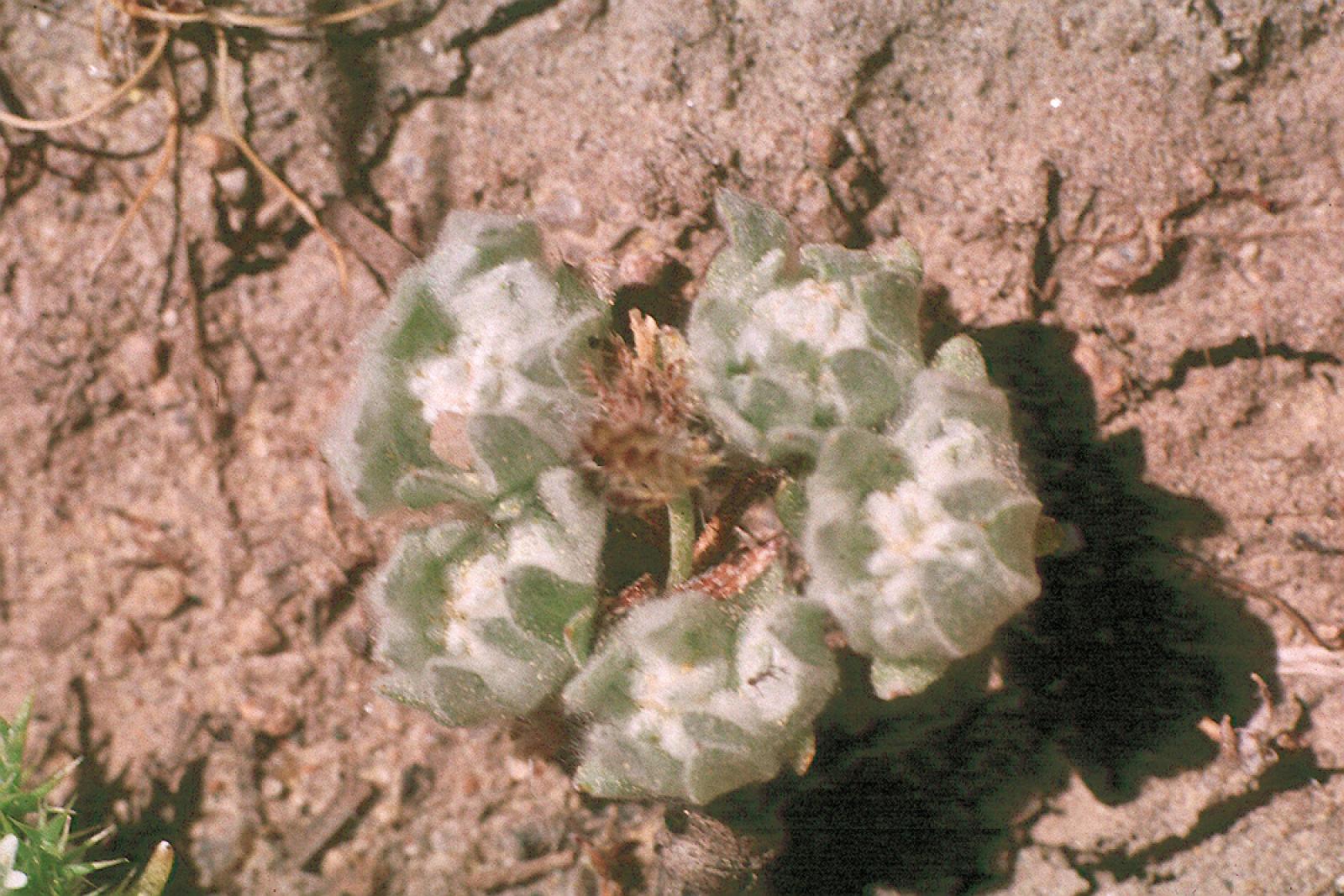Psilocarphus
|
Family: Asteraceae |
Annuals, 1-15(-20) cm. Stems 1, erect, or 2-10, ascending to ± prostrate. Leaves cauline; mostly opposite; blades linear to ovate or obovate. Heads borne singly or in glomerules of 2-4 in ± dichasiform (sometimes ± paniculiform) arrays. Involucres 0. Phyllaries 0. Receptacles ± obovoid (sometimes lobed, heights 1-2 times diams.), glabrous. Pistillate paleae falling, radiating in all directions; bodies with 5+ nerves (nerves reticulate, prominent), obovoid to ± cylindric, saccate most of lengths (terete, galeate or cucullate, each loosely enclosing a floret); wings inflexed (± lateral). Staminate paleae 0. Pistillate florets (8-)20-100+. Functionally staminate florets 2-10; corolla lobes 4-5, ± equal. Bisexual florets 0. Cypselae brown, monomorphic: terete to ± compressed, narrowly obovoid (then slightly incurved, abaxially gibbous) to ± cylindric, faces glabrous, smooth, shiny; corolla scars usually ± subapical; pappi 0. x = 14. See discussion of Filagininae following the tribal description (p. 385). In the flora area, Psilocarphus inhabits sites with Mediterranean, semiarid, and cool-temperate climates. In the south, it remains within the Californian Floristic Province, not entering the Mojave and Sonoran deserts; to the north, it extends from the Pacific Northwest eastward across the Great Basin, Columbia Plateau, and northern Rocky Mountains to the western edge of the northern Great Plains. Ongoing degradation of vernal pool habitats in California may soon justify conservation concern for P. chilensis and P. brevissimus var. multiflorus. The amphitropical species of Psilocarphus and Micropsis (P. brevissimus var. brevissimus, P. chilensis, M. dasycarpa) occupy littoral habitats; migratory shorebirds probably facilitate occasional long-distance dispersal of their light cypsela-palea complexes (A. Cronquist 1950). Populations of these self-pollinating species can establish from one cypsela. Psilocarphus is monophyletic and probably sister to Micropus, with ancestors in or near Stylocline (J. D. Morefield 1992). Psilocarphus is easily recognized by leaves opposite and paleae cucullate or galeate, reticulately nerved; the clusters of heads resemble compact bunches of woolly grapes or marbles. Differences between species are slight but consistent in most specimens.
|

